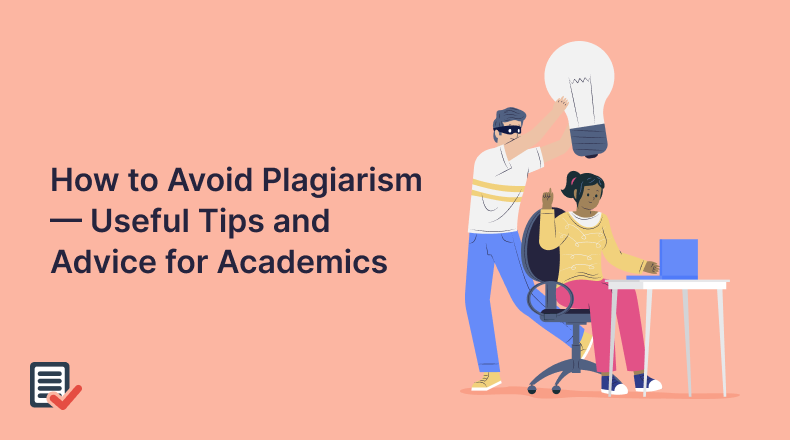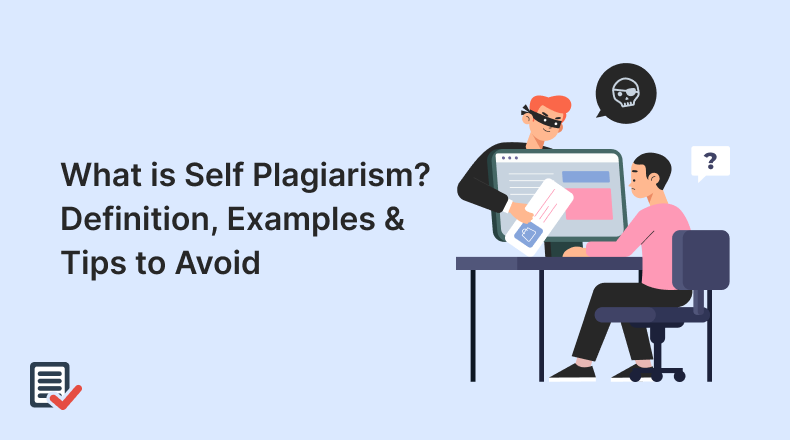
Every day, the amount of information available on the web grows. In fact, a recent study shows that 402.74 million terabytes of data are produced daily. Such a huge number increases the likelihood of accidentally copying someone else’s ideas.
Nowadays, most newbie academicians find it difficult to create something completely original while avoiding plagiarism. If you’re one of them, this blog post is just for you.
Here, we’ll help you prevent the risk of plagiarism so that you can create a completely unique piece of content for your academic tasks. Let’s get started!
Tips for Avoiding Plagiarism in Academics
Here are some practical tips to help you avoid plagiarism while creating content for your academic tasks.
1. Understand Plagiarism and Its Different Shapes & Forms
Plagiarism is similar to a virus. You can’t avoid it if you don’t know about the following things:
- What exactly plagiarism is?
- In which shapes and forms does it occur?
- How does it originate?
So, when it comes to preventing the risk of plagiarism, experts first recommend finding the answers to these questions. And that’s what we’ll do here.
In short, plagiarism is using someone else’s creation (ideas or words) without their permission. This can be in the shape of complete or partial text verbatim. But besides these, plagiarism also happens when you:
- Cite your sources wrongly, or don’t specify the references correctly.
- Paraphrase incorrectly or present the rephrased information as your own.
- Reuse text from your previous work without mentioning its prior usage.
So make sure to understand these varying shapes and forms. This will make it easier to avoid plagiarism effectively.
2. Conduct Extensive Research and Use Your Own Creativity
You want to keep plagiarism away from your work, right? Well, the best way to do it is to rely on your own information and use your own creativity to present your data. But the big question is, how do you find unique information about a certain topic? Well, the short answer is to conduct extensive research.
Consider a variety of resources to explore your topic in depth, including:
- Web pages
- Blog posts
- News articles
- Books
- Magazines
- Podcasts
- Videos
- Webinars
Since people generally restrict their research phase to search engine results pages (SERPs). However, exploring the aforementioned resources will definitely help you discover unique information on your topic. By using your extensively researched data, you will be able to create something truly unique and original.
But, how to actually use the researched information? By using your own creativity. So, always use your unique point of view and thinking to explain the researched data in your own words. By doing so, plagiarism will never occur in your work.
3. Use Different Ways to Paraphrase The Text Effectively
Using your own researched data is an excellent way to add original and unique factors to your work. However, sometimes, it becomes essential to back the claims you may have made through your researched information. That’s where the usage of existing sources will come in handy.
But now, the big question is, how can you use details from existing sources while avoiding plagiarism? Well, by paraphrasing (also known as rephrasing).
Paraphrasing refers to using your own words and sentence structures to explain existing information in your own style. It is a very effective method for preventing plagiarism in content. However, implementing it correctly is the key to its success.
Here are some useful ways to rephrase any piece of text properly:
- Start by reading your source content thoroughly. This will help you fully understand your source material.
- After understanding your source to a point where you can describe it without needing to refer to it, you can begin the actual paraphrasing process. To do so, use the combination of the following techniques:
- Change the vocabulary, but consider the context of synonyms.
- Change the words’ order in a sentence.
- Restructure your phrases by changing their voices or using alternate sentence types.
- Identify the information in a paragraph by strategically changing the placement of sentences.
- Implementing these various techniques will result in a piece of text that looks different from your source. But if that’s not the case, check if you’re applying the aforementioned strategies while keeping the original version aside.
- If you’re struggling to rephrase something on your own, try using an AI-powered text paraphraser. However, make sure to review the results of this tool before finalizing it.
- Once you’ve perfectly formulated the rephrased version of your information, check if it conveys the same meaning. If not, you’ll have to paraphrase it again.
After applying all these paraphrasing approaches, you’ll be able to cite an existing piece of text without falling victim to plagiarism. This way, your work will become original, authentic, and credible.
4. Learn When and How to Use Double Quotes
There is no doubt that paraphrasing will help you refer to existing pieces without incurring plagiarism. However, the art of paraphrasing sometimes changes the crux of information. This is especially true when you try to rephrase any famous quotations or sayings.
Quoting is similar to paraphrasing, which will help you reuse information from existing sources. But, you don’t need to change the wording and sentence structure you intend to double quote. Instead, you can use the information without any modifications.
For instance, suppose we want to include a famous saying here. In this case, we’ll enclose all the information inside inverted commas (“”). That’s how readers will understand that this particular text piece has been borrowed from elsewhere. Hence, quoting is another effective way to create something original and unique while avoiding plagiarism.
5. Never Forget to Cite Sources Properly
You can use paraphrasing or quoting to reuse existing data in your work. However, your work will still be prone to plagiarism if you don’t credit the original owner of the rephrased or double-quoted information.
But how can you do that?
Well, you need to pick a proper citation style. A few of the most common citation formats used in the world of academia are as follows:
- APA
- Chicago
- MLA
Sometimes, the required citation style is already mentioned in the requirements section. So, make sure to check your task’s requirements. But if that’s not the case for you, you can either look into your institute’s guidelines or ask your senior.
Once you’ve identified the citation style you need to use in your document, it’s time to apply it. So, use its formatting guidelines to specify an in-text citation alongside your paraphrased and double-quoted information. Then, apply the same style to include the full reference for the specified in-text citation in a separate bibliography or reference list.
However, if you are having difficulty in formatting your required citation style, take assistance from a citation generator. Using this tool, you don’t need to remember the formatting of any style. You just need to enter the required details, and it will automatically generate a complete reference using the current formatting standards of all popular styles.
6. Check the Originality of Your Work
Finally, the most important tip is to verify the originality of your work. Avoiding plagiarism fully will only become possible after conducting a plagiarism test on your whole text, as the chances of unintentional plagiarism are still there. Hence, for this purpose, you should run your content through an advanced plagiarism detector to ensure the originality of your text
You just have to enter your content into the tool, and it will automatically scan it and compare it against billions of web pages, journals, research papers, and other sources. It will conduct an in-depth analysis to verify whether your provided text matches any other source or is 100% unique. If there are any similarities found, this will indicate that your work isn’t completely original.
Final Verdict:
In conclusion, avoiding plagiarism is only possible if you understand what plagiarism is and how it happens. If you don’t, it would be best to know about plagiarism and its different forms. Once you’ve done so, you can rely on your creativity and researched data to keep your work free from plagiarism. However, it is also essential to cite the references correctly. By doing so, you will not only keep your work original and unique but also make it more credible and authentic.
Search
Categories
Recent Blogs
-

Avoid Plagiarism in Academics - Useful Tips and Advice For Students
-

How to Write an Executive Summary That Stands Out?
-

What are Periods (.) in Punctuation: Examples & Usage Tips
-

Grammar Vs Syntax - Understanding the Key Differences With Examples
-

What is Editorial Content & How Is It Used in Marketing?


